Amal Rantisi | Diana Rahima | Muhammed Fansa
Amidst fear of a Russian role impeding reaching an international consensus, the Syrians are waiting for a battle in the corridors of the UN Security Council to extend Resolution (2585) regarding aid delivery through the Bab al-Hawa border crossing between Syria and Turkey, with cards that Moscow insists on obtaining, including cross-lines aid instead of cross-border aid and the issue of early recovery.
The UN Security Council renewed the resolution for a period of 12 months on 9 July 2021, in two phases of six months each.
The resolution included a clause that welcomed all efforts and initiatives aimed at expanding the scope of humanitarian activities in Syria, including early recovery projects.
As stated in the resolution, this initiative aims to provide water, sanitation, health care, education, and shelter, which is being carried out by the International Committee of the Red Cross (ICRC) and other organizations.
These facilities for non-governmental organizations to “expand” the scope of early recovery activities in the areas of the Syrian regime came in the agreement between Russia and the United States after fears that Russia would use its veto in the Security Council to prevent the extension of the decision to enter aid through the Bab al-Hawa crossing.
Russia brought to the fore the issue of early recovery with the approaching renewal of the cross-border aid decision on 10 July as an excuse it is now taking for its rejection of the decision because “the West has not fulfilled its obligations written in Resolution (2585) regarding the establishment of a mechanism to provide Syria with funds for early recovery programs, of which only 3 percent were allocated,” Vasily Nebenzya, the Permanent Representative of Russia to the UN, said on 2 June.
In this file, Enab Baladi discussed with experts and researchers in the humanitarian and political fields the issue of early recovery as a term in the field of humanitarian aid and relief and its differences from the reconstruction process.
In addition to its importance for Russia and the Syrian regime and its use as a condition for the passage of aid across the border in light of the current international developments in view of the Russian war on Ukraine, given its importance to civilians and the mechanism of its application in Syria.
A loose term, what is “Early Recovery”?
There is no clear consensus on the definition of early recovery in humanitarian circles, as it carries a vague term in its interpretation, according to what a report by the Operations and Policy Center (OPC) mentions, as it is possible to consider early recovery aid as falling between reconstruction on the one hand and UN aid ordinary services that provide food, water, shelter, sanitation, and hygiene services on the other hand.
The United Nations Development Office (UNDP), in turn, defines early recovery as “an approach that addresses recovery needs that arise during the humanitarian phase of an emergency; using humanitarian mechanisms that align with development principles.”
The UNDP adds that “this approach enables people to use the benefits of humanitarian action to seize development opportunities, build resilience, and establish a sustainable process of recovery from crisis.”
The United Nations sees it as an approach to humanitarian response focused through enhanced coordination, enhanced resilience, and rebuilding or strengthening capacities.
Early recovery contributes to solving the long-term problems that contributed to a crisis rather than exacerbating them, as well as a set of specific programmatic actions to help people to move from dependence on humanitarian relief towards development, according to the United Nations.
In an interview with Enab Baladi, the Syrian researcher Sinan Hatahet simplified the concept as “a process of restoration and improvement of the living conditions of people in Syria on a narrow and local level.”
However, the researcher believes that the Syrian regime and Russia behind it are seeking, through early recovery projects, to circumvent the sanctions imposed on Syria and to allocate some funds for early recovery projects within the prohibited “reconstruction” operations, as if they are a “keystone” for those operations.
Russia is taking advantage of the lack of a specific definition of early recovery accredited by the UN by redefining it or expanding its scope to include “reconstruction” projects that improve the regime’s governance and service capacity in a way that qualifies it to strengthen its control over the Syrian people, according to Hatahet.
Samy Akil, a researcher at the Operations and Policy Center and a visiting fellow at the Australian National University, believes that the main problem around the term is the lack of a unified definition by international organizations and countries in general and that every country and organization looks at the issue of early recovery with a different perspective, which caused big problems with decisions.
According to Akil, early recovery is “the restoration of basic and humanitarian services to allow the affected people to support themselves more stably, and the aim is to reduce dependence on relief organizations.”
In light of the divisions in Syria between northeastern, northwestern, and regime-controlled areas, the first collision comes about basic services and the affected people, who are viewed by the US or Western countries with a different perspective than Russia, as this confusion constitutes the main issue regarding early recovery, Akil said.
The difference between early recovery and reconstruction
The concept of early recovery has been a focal point of contention in humanitarian circles in recent years. Due to the absence of consensus, it has become open to different interpretations. Broadly speaking, and according to the UNDP, early recovery is “an approach that addresses recovery needs that arise during the humanitarian phase of an emergency.” Put another way, this may be defined as the restoration of basic and essential services through which affected individuals can support themselves more sustainably rather than being constantly dependent on aid organizations to meet their basic needs.
Despite the absence of consensus over its definition, our reading of the literature and discussions with humanitarian experts suggest there are three differences between early recovery and reconstruction. First, reconstruction is planned and executed by the state, while early recovery is planned and executed by aid organizations, whether centralized under one administrative body—such as the United Nations (UN)—or by individual organizations.
Second, while early recovery is a form of humanitarian assistance, reconstruction is not. Reconstruction can come in the shape of concessionary loans through unilateral and multilateral organizations—such as the International Monetary Fund or the World Bank—while early recovery is a form of aid and does not need to be reimbursed.
Third, like other forms of humanitarian assistance, early recovery is humanitarian needs-based, while reconstruction does not have to be since the state administers it. Early recovery aid can be viewed as an activity between the currently prevalent approach of focusing on basic humanitarian aid—food, shelter, and WASH (water, sanitation, and hygiene) services—and reconstruction.
Source: the Operations and Policy Center (OPC)

Entry of humanitarian aid convoys through Bab al-Hawa crossing in Idlib – 2 June 2021 (Enab Baladi / Iyad Abdul Jawad)
Russia’s condition for allowing aid
“Early Recovery,” argument of 2022
The scenario of renewing the decision to introduce cross-border aid this year is similar to its predecessor, in light of a new Russian threat to use its veto.
Russia’s argument in 2021 was through the statements of its officials that the aid that reaches Idlib in the north of Syria is “politicized” and that “militants” are preventing it from reaching civilians, according to what was reported by the Russian RT channel at the time through the Russian envoy to Syria, Alexander Lavrentiev.
In addition to his stress that cross-border aid from Turkey is a violation of Syria’s sovereignty, he said, “Peace in Syria is linked to achieving the full sovereignty of the Syrian government.”
As the date for renewing the decision approaches, early recovery and reconstruction have become a Russian officials’ argument, as Lavrentiev asserted again, “The West has not implemented all the commitments it promised a year ago regarding the implementation of reconstruction projects, and therefore We will most likely discuss the issue of canceling the cross-border aid mechanism.”
In his interview with Enab Baladi, the OPC researcher Akil identified two reasons for Russia to raise this issue before the international community.
The first is that early recovery is linked to the issue of the legitimacy of the Syrian regime, as Russia wants humanitarian aid to pass through Damascus and in regime-controlled areas to strengthen the image of the “legitimate government” and rehabilitate it before the international community.
The Syrian regime keeps repeating that cross-border aid “does not respect the standards of preserving the sovereignty and independence of Syrian territory,” according to the Syrian regime’s permanent representative to the United Nations, Bassam Sabbagh.
The second reason is related to financial issues, as Russia and the Syrian regime, and even Iran do not have the ability to finance projects that are generally considered in the context of early recovery, which can be viewed as reconstruction projects, Akil said.
The lack of financial capabilities, especially after the war on Ukraine, has become the main reason for Russia’s focus on the issue of early recovery, especially in the regime-controlled areas, which are witnessing a deteriorating economic condition, where Russia wants its “piece of cake” in reference to countries’ aid to projects in areas not controlled by the Syrian regime, the researcher added.
In the latest United Nations assessment on humanitarian needs in Syria, Stephane Dujarric, the spokesperson for the United Nations, said that about 14.6 million people need humanitarian assistance this year, an increase of 1.2 million people, or 9 percent, over 2021.
Impact of US-Russia dispute
The Russian war on Ukraine left an international escalation between Russia on the one hand and the Western alliances on the other, which imposed packages of economic sanctions.
Diplomats from several countries warned against Russia’s use of the humanitarian aid card in Syria, given Russia’s link with other countries to the distribution of power in Syria, by compromising world powers over the issue of its “invasion” of Ukraine, according to an informed report by the New York Times on 28 May.
Russia’s deputy UN ambassador, Dmitry Polyanskiy, said in May that Moscow had not decided how it would vote. But he said that under the current system, the aid was vulnerable to extremists in Idlib.
“I do not deny that it goes to refugees as well, but the terrorist groups — they benefit from this,” he said, adding that the extremists had attacked deliveries.
Polyanskiy assured that talks between Russia and the United States were stagnant, given “current geopolitical circumstances.”
“Frankly, we do not have very many things to make us optimistic at this stage,” he said.
According to the New York Times, three foreign diplomats said Russia had sent vague signals suggesting it might try to use the vote to gain concessions in the standoff over Ukraine.
“One of the diplomats also predicted Russia would counter accusations that its invasion had violated Ukraine’s sovereignty by denouncing the aid convoys as an infringement on Syria’s territorial integrity,” the New York Times added.
Akil expected that the international developments after the war in Ukraine would have a key role in the issue of renewing or not renewing the UN resolution (2585).
This issue is likely to constitute the biggest factor in Russia’s decision, contrary to what it claims publicly that the weakness of funding for early recovery is the problem now, the researcher added.
The concerned countries did not contribute to allocating funds for early recovery due to their lack of confidence in Russia and the Syrian regime, especially after the war on Ukraine, which is an essential point that must be considered from a geopolitical perspective rather than a local one related to the Syrian file, according to Akil.
|
The Russian side may publicly say that the main reason is the lack of or support for an early recovery program, such as what was agreed upon in the negotiations that took place six months ago, but it is likely that if the decision is objected to, the main reason will be the geopolitical manipulation that is taking place between the United States and Russia. Samy Akil, a researcher at the Operations and Policy Center (OPC) and visiting fellow at Australian National University |
Turkey may pressure to prevent Russia from taking this step as Turkey fears that the closure decision will create a humanitarian disaster in northern Syria and a new wave of refugees, which will negatively affect relations between Turkey and Russia, according to Akil.
In the midst of the concessions offered during Russia’s bargaining with the world powers, the United States had previously made concessions by reformulating the sanctions law by the US Treasury towards Syria, which to some extent allowed humanitarian organizations and international support to enable early recovery.
The US Treasury published clarifications on 24 November 2021, specifically allocating the expansion of permits for NGOs to engage in early recovery activities and transactions in Syria for the first time.
Examples of these new exemptions include restoring health services, rehabilitating schools, renovating mills, protecting cultural heritage sites, purchasing refined Syrian oil for use inside the country, as well as entering into “certain transactions” with elements of the Syrian regime government.
The US’s facilitation of early recovery activities is seen as a “humanitarian good” necessary to obtain Russia’s approval to renew the decision to enter aid across the border, as explained by a study issued by the Center for Operational Analysis and Research (COAR).
“I am very concerned about the US administration’s funding of so-called “early recovery” projects in regime-controlled areas. These activities blur the line against the reconstruction prohibited by Caesar’s law and open the door to normalization with Assad.”
“It is my concern that the (US) administration’s efforts have expanded beyond humanitarian access and into the realm of reconstruction, while we have seen little movement on seeking accountability for the Assad regime.”
“The law on normalization and reconstruction is clear. Any engagement with the Assad regime, whether diplomatic or economic, must be met with a firm response using the tools laid out in the Caesar Act.”
(US Senator Jim Risch (R-Idaho) during a session of the Committee on Foreign Relations on US policy in Syria)
In a joint statement with representatives of the US, the UK, and the League of Arab States, the EU emphasized that access to life-saving humanitarian assistance must be provided through all modalities, including cross-border and cross-line as well as early recovery projects consistent with UNSCR 2585, across the whole of Syria.

Syrian Foreign Minister Faisal Mekdad meets with Executive Director of the World Food Programme (WFP), David Beasley, in Damascus – 10 November 2021 (Syrian Information Ministry)
Does “early recovery” serve civilians?
The main idea of early recovery is to establish small projects in which the restoration of infrastructure is at a very local level. It is natural that it will serve the Syrians in the short term, but the extent of its efficacy in the medium and long term is mainly related to its sustainability and the quality of the solutions in place; to develop or to build upon, and to be evaluated on a case-by-case basis, according to Sinan Hatahet.
The Syrian researcher gives an example to Enab Baladi about one of the early recovery projects related to restoring the infrastructure of the electricity distribution network, whether in regime areas or in opposition areas, as its benefit is to restore the existing network, and through it, people can benefit from the electricity in their areas after it was cut off.
While other unsustainable projects within the early recovery are water projects, for example, that can cause environmental damage because some of them relate to drilling wells and the excessive use of groundwater, which can destroy the water structure of the area, while sustainable alternative solutions require drawing water from nearby lakes or from existing water bodies, Hatahet says.
Access to beneficiaries
Natasha Hall, a fellow in the Middle East Program at the Center for Strategic and International Studies, believes that “early recovery means a lot of different things that do not necessarily fall into the early recovery cluster but are mainstreamed throughout activities.”
The researcher explained to Enab Baladi that Syrians can benefit from early recovery programs “if Syrians in need are able to benefit and if such activities are in line with humanitarian principles.”
“Like other aid work, early recovery work may not benefit those who cannot return to their properties, claim their assets or those that aid agencies cannot access,” Hall said.
“Housing, land, and property issues which have only gotten worse throughout the conflict could also be exacerbated without a great deal of attention to the context and conflict sensitivity. It is not clear that agencies have the capacity for this inside government-held areas,” according to Hall.
She also pointed out that “aid agencies need to understand the environment they are working in and the environment that potential beneficiaries are living in. That means having secure and appropriate feedback channels for beneficiaries and in-depth studies on the context in each area.”
“Conflict-affected areas are difficult places for such work, with Syria experiencing the largest displacement and humanitarian crisis since World War II and representing one of the most complex cases,” Hall said.
Problem is not in mechanism, but in application
Syrian doctor Mohammad Katoub, a humanitarian activist and former aid and advocacy worker, explained to Enab Baladi that the problem is not with the concept of early recovery but with its application.
Katoub considers early recovery to be a response that begins from the early days of the humanitarian response and aims to avoid the long-term effects of the disaster, build local capacities, and promote a national approach to the reconstruction phase.
“This should not be denied to the Syrians, but it should not be in the hands of the Syrian regime to use it to strengthen its influence, and it should not contribute to the further politicization of aid,” he adds.
Katoub also believes that the problem lies in the fact that humanitarian organizations in Syria were very politicized, and the regime repeatedly used them in all ways, whether to benefit financially by corrupting them or using aid as a reward and punishment for communities according to their involvement in the popular movement against it or according to their political tendency.
Early recovery is, of course, beneficial for the Syrians, but before aid is pumped under this framework, the mechanisms must be neutralized from the influence of the regime and the rest of the de-facto forces that control other parts of Syria. Without that, any aid will be in the interest of the regime and not the Syrians, Katoub said.
Civil and humanitarian activist Dr. Zaidoun al-Zoubi agrees on the importance of early recovery so that people do not remain dependent on food baskets in a country whose economy is non-existent.
Al-Zoubi does not rule out the exploitation of this mechanism by the de-facto authorities and the Syrian regime alike.
“The fears are the same in any other mechanism as providing aid in Idlib raises fears of providing benefit to Hayat Tahrir al-Sham (HTS), and providing it in Damascus renews fears of exploitation by the regime,” says the humanitarian activist.
But he pointed out that the authorities benefit more from the war economy resulting from the presence of humanitarian aid without a real economy, such as drug trade, arms trade, smuggling, and money-laundering operations, which flourishes in wartime and are well used by the de-facto authorities.
Who implements early recovery projects?
Researcher Sinan Hatahet told Enab Baladi that most of the development projects that fall within the framework of early recovery would not be implemented through local partners, and the nature of the partners varies from one area of influence to another, such as the Syrian Red Crescent organization and the Syria Trust for Development, which Asma al-Assad, the wife of the head of the Syrian regime, Bashar al-Assad, has the upper hand in controlling it.
The Syrian regime benefits from such projects and interferes in choosing the areas affected by the aid and in the situation of the popular groups that benefit from it, while the areas of the Autonomous Administration of North and East Syria (AANES) are considered less intrusive than the regime’s areas, and this is due to the controlling party, according to Hatahet.
He pointed out that in addition to the local actors, there are organizations such as the Syria Recovery Trust Fund that enjoys great independence and cooperates with the Syrian Interim Government (SIG) in northern Aleppo countryside and with the AANES areas in northeastern Syria, which is considered one of the most capable of implementing projects with minimal intervention by local government agencies.
In his turn, researcher Samy Akil referred to independent organizations such as The Norwegian Refugee Council and Danish Refugees Council, which are international and relief organizations that operate in an independent manner throughout Syria.
These organizations determine the priorities of aid on their part and have the largest share in the implementation of early recovery programs.
At the same time, the United Nations or some countries individually, such as the United States, contribute to the early recovery file, but there is a reluctance by countries to support these activities for political reasons and, at the same time, for strategic reasons, and this is reflected in the funding of early recovery by international organizations and countries, which is close to 3 percent.
As for the countries’ contribution to early recovery, it covers only a symbolic part of the UN aid funds allocated to Syria, and these countries give the bulk to their affiliated organizations, which have greater knowledge of exactly where the money goes, such as Norway, which gives financial support to the United Nations, but the bulk of the money goes to its affiliated organizations, such as the Norwegian Refugee Council, according to Akil.
As another example, Germany gave within the humanitarian response plan in Syria for the year 2021 approximately 4,928,000 US dollars. Of the total amount, 0.1 percent was allocated to early recovery and livelihoods, according to data provided by the United Nations Office for the Coordination of Humanitarian Affairs (OCHA).
Lack of transparency
The Syrian regime has a track record of stealing aid, whether through distributing it exclusively in areas loyal to it, manipulating the aid exchange rate, corruption, or hiring aid workers and purchases from its departments.
This deterred donor governments from funding non-essential items such as early recovery aid, as the percentage of aid directed to early recovery projects in UN agencies for 2021 reached 8.8 percent, and to 4 percent this year, while the United Nations Syria Humanitarian Response Plan 2022-2023 calls for donating 247.6 million US dollars for “Early Recovery and Livelihoods” projects.
The Syrian regime constantly stresses the importance of UN aid and early recovery projects and their role in supporting “Syria’s steadfastness.”
Bassam Sabbagh, the Syrian regime’s delegate to the United Nations, stated in March that foreign countries (he did not specify) were obstructing efforts to start early recovery projects, which could help build a “more secure and resilient” Syria.
The low funding of aid directed to early recovery projects, which amounts to 4 percent of the total UN support, raises a question about countries’ reluctance to support these projects, despite the facilities provided by the US in the context of sanctions.
The researcher, Samy Akil, believes that these facilities were not sufficient due to the reluctance of countries to support programs within the regime’s areas, especially in light of currency manipulation, corruption, and the absence of transparency.
The political researcher asserts that achieving transparency is difficult in this matter, especially in the regime-controlled areas, considering that the “ironic” thing is that the biggest obstacle to supporting the early recovery projects demanded by the Syrian regime is the regime itself.
“The lack of transparency, currency manipulation, and corruption led to a lack of confidence in this political system, and not only from international organizations but from relief organizations that have begun to think about how to adequately implement programs and support those entitled in light of the intransigence of the Syrian regime to prevent countries or organizations from imposing any mechanism to achieve transparency,” Akil says.
Neutralizing early recovery from the conflict
Doctor and humanitarian activist Mohammad Katoub believes that the term “reconstruction” has been linked by a number of donor countries’ governments to the political change in Syria, which is also a problem as more corrupt and politicized governments may come to aid.
Consequently, the aid condition must be transformed from a political condition to one based on rights and accountability to the beneficiary communities, Katoub told Enab Baladi.
During the ten years of the humanitarian response, the regime has been able to use the aid to a large extent for its benefit, starting from employment to planning aid, purchasing and transferring funds, and ending with controlling the identification of the beneficiary group, and therefore any aid provided without exceeding all of that means more benefit to the regime.
It can be prevented by overcoming these obstacles and by putting in place mechanisms that enhance oversight of aid and the accountability of agencies to donors and to beneficiary communities.
In turn, humanitarian activist Zaidoun al-Zoubi believes that the tools through which the parties to the conflict can be neutralized are limited, but early recovery in itself is a tool because it is based on breaking the borders that divide the country, as cross-geographical projects break the de-facto authorities’ control over aid.
if you think the article contain wrong information or you have additional details Send Correction
النسخة العربية من المقال
-
Follow us :













 A volunteer in the Syrian Arab Red Crescent is supervising an electricity network project in the village of al-Dumaina al-Gharbyia in Homs countryside - 18 June 2022 (SARC’s Facebook page)
A volunteer in the Syrian Arab Red Crescent is supervising an electricity network project in the village of al-Dumaina al-Gharbyia in Homs countryside - 18 June 2022 (SARC’s Facebook page)





 A
A
A
A
A
A
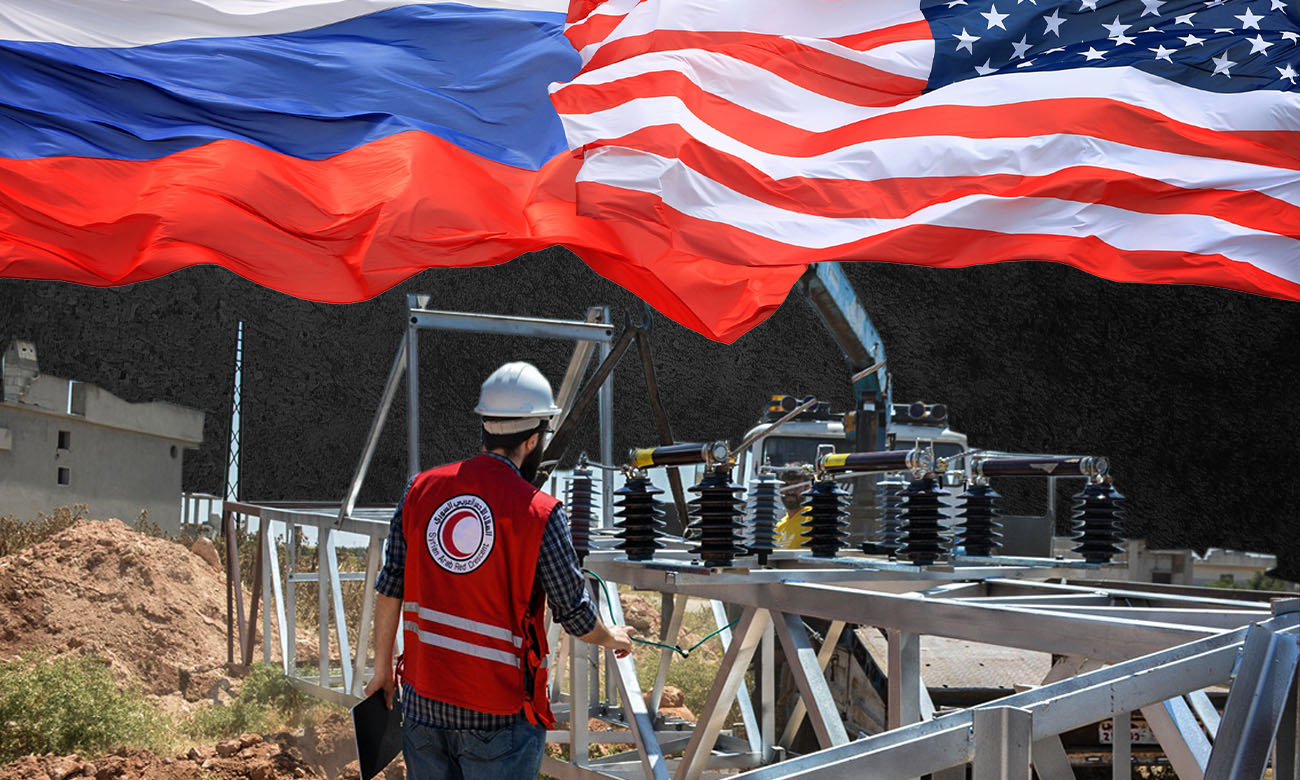
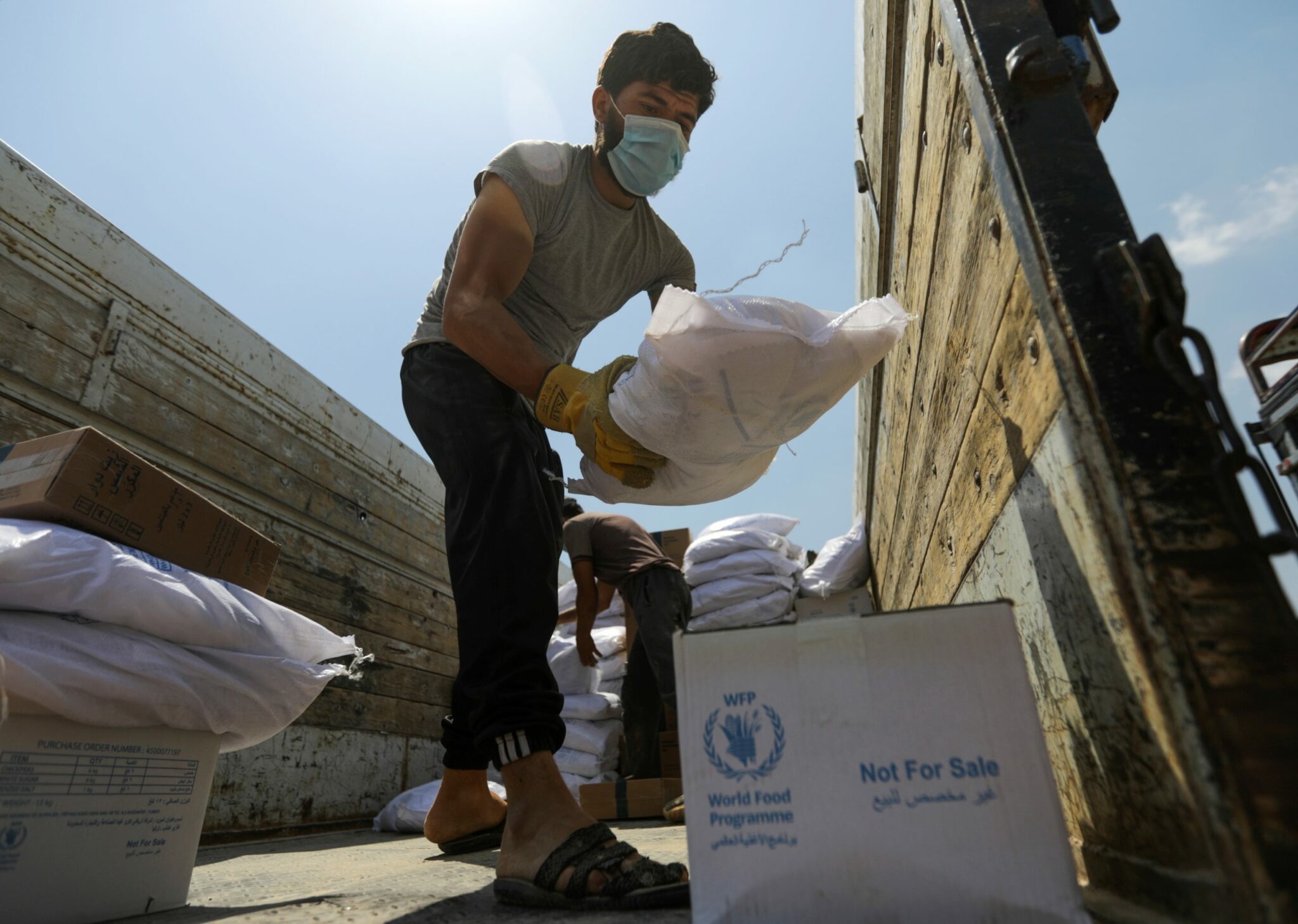
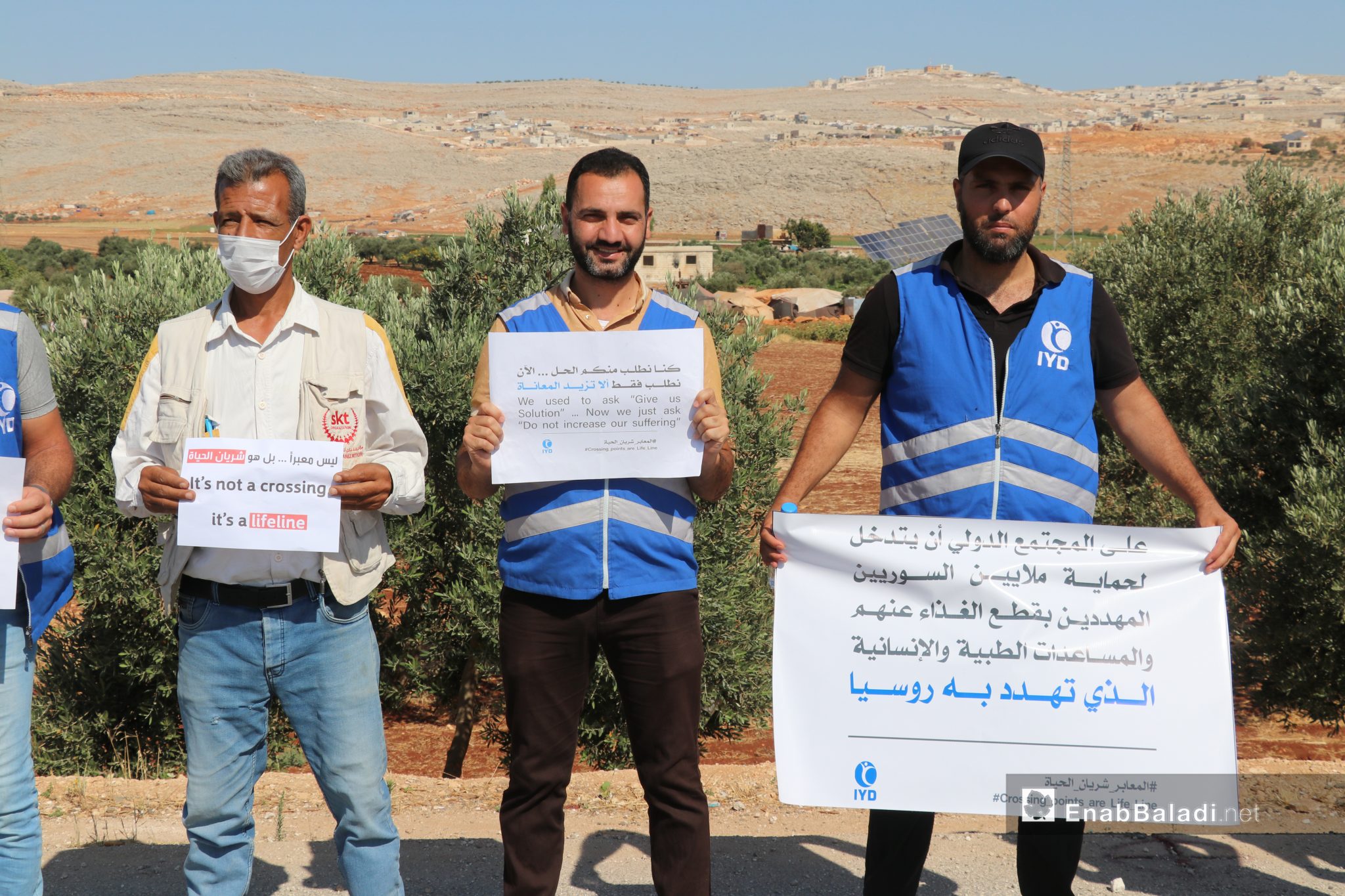
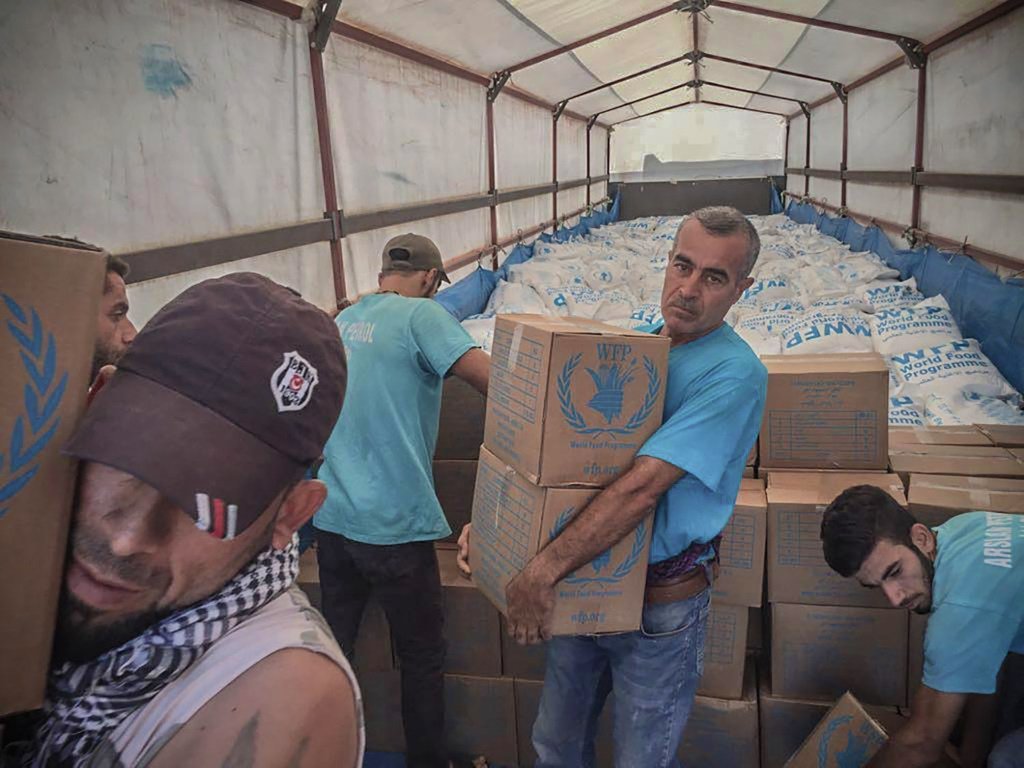


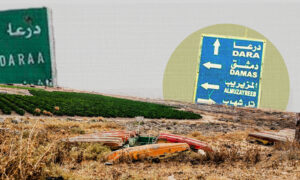


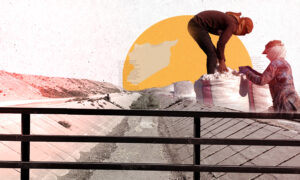

 More In-Depth
More In-Depth